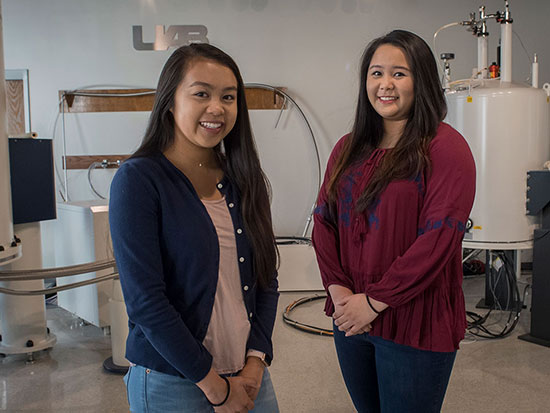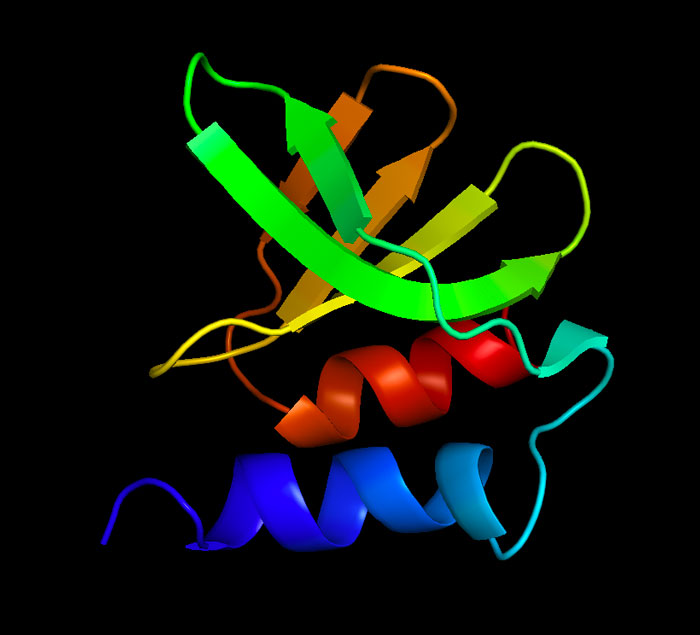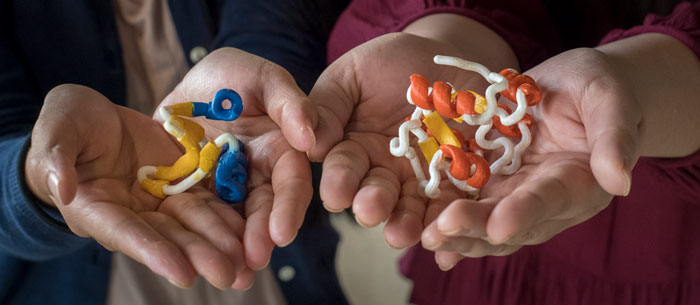Media contact: Yvonne Taunton
 Jessica Pham and Christine NguyenIn a few years, Jessica Pham and Christine Nguyen aim to be defending patients against health threats. Right now, the UAB seniors are launching a pre-emptive strike against two fatal diseases. Their analysis of bat coronavirus HKU4 could eventually be used to help design new drugs to fight the deadly human coronaviruses SARS and MERS.
Jessica Pham and Christine NguyenIn a few years, Jessica Pham and Christine Nguyen aim to be defending patients against health threats. Right now, the UAB seniors are launching a pre-emptive strike against two fatal diseases. Their analysis of bat coronavirus HKU4 could eventually be used to help design new drugs to fight the deadly human coronaviruses SARS and MERS.
In the fall, Pham, from Spanish Fort, Alabama, starts at the University of South Alabama College of Medicine; Nguyen, from Huntsville, will begin her medical training at the UAB School of Medicine. But first, they launched an adventure in the lab. “As biochemistry majors, we are interested in the interdisciplinary nature of the field and how it can be applied in many ways, especially in medicine,” says Pham. On April 13, she and Nguyen will present their work at the 2018 Spring Expo, a showcase for undergraduate research and scholarship at UAB.
 An image from Dr. Margaret Johnson's lab of the bat coronavirus HKU9 protein, a similar strain to the HKU4 studied by Pham and Nguyen.
An image from Dr. Margaret Johnson's lab of the bat coronavirus HKU9 protein, a similar strain to the HKU4 studied by Pham and Nguyen.
What bats can teach us
Nguyen and Pham are both taking the Physical Biochemistry Lab course taught by Margaret Johnson, Ph.D., assistant professor in the College of Arts and Sciences Department of Chemistry. That’s where they learned about research on bat coronaviruses and their similarities to human SARS and MERS — airborne coronaviruses with high fatality rates. SARS has killed some 800 people in recent years, while MERS has a 40 percent fatality rate. “Dr. Johnson’s research is focused on understanding emerging viruses such as SARS, MERS and Zika,” Nguyen says. “Her lab aims to understand viral protein structure-function relationships and to develop new inhibitors and drugs.”
Bats act as a reservoir species for a number of viruses, Pham points out. “SARS-like coronaviruses have been found in Chinese horse-shoe bats, and coronaviruses related to MERS have been found in bats all over the world.” Learning more about the structure of bat coronaviruses could identify weaknesses that could be exploited with new drugs, she says.
 Pham and Nguyen hold HKU4 proteins modeling the M and C macrodomains.
Pham and Nguyen hold HKU4 proteins modeling the M and C macrodomains.
Hands-on experience
Pham and Nguyen used recombinant techniques to express samples of bat coronavirus HKU4 MC macrodomain protein in E. coli cells. “The samples are not infectious on their own, but they are representative of bat virulence factors,” Nguyen says. They then examined the structure and folding of the bat virus proteins in UAB’s High Field Nuclear Magnetic Resonance Facility, which is one of the leading such facilities in the Southeast. Future directions for the research could include ligand binding assays to find structures that could target the MC macrodomain.
The most surprising discovery, Pham says, was “getting the chance to apply the techniques we had been learning about in our biochemistry classes in real life.”
Research 2.0
Nguyen and Pham’s project, “Characterization of the Bat Coronavirus HKU4 MC Macrodomain," is one of more than 250 projects that will be presented by more than 600 students at the 2018 UAB Spring Expo.
The event, which celebrates its 11th anniversary this year, showcases research, scholarship and other academic endeavors by UAB undergraduates on April 12 and 13.
